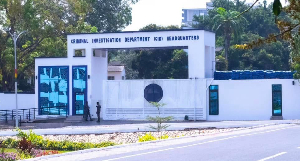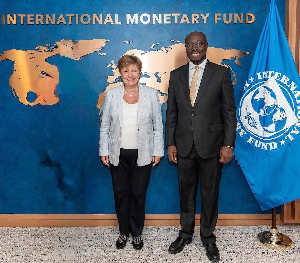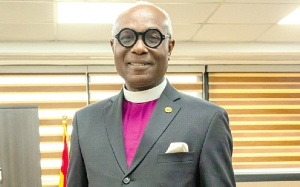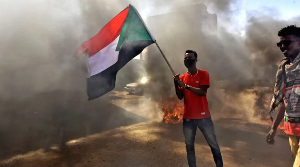We have provided insights into some of the major reasons for improving aspects of the journalism industry. These reasons are varied and many. We have also made it assertively eloquent that our focus is not restricted to print journalism per se. In fact we tailored our focal inclusiveness to listenership (radio) and viewership (television) as well. Then again, in one sense, we did not concentrate on infotainment in our previous exposés because of a clear understanding and acknowledgment that Ghana’s electronic media, television mostly, had not graduated yet to that great height of informational sophistication. Even if we did, we would most certainly have discountenanced it as the seeming immiscibility of entertainment and information in one episodic capsule makes for serious distractions in many a critical learning situation.
In another sense, a rigid philosophic divorce between entertainment and information may be the way forward for the cause of critical journalism in Ghana. Another parallel topical question we advertently glossed over is edutainment. However, edutainment and infotainment will not be given dialectic injections of theoretical elaboration in this piece given their easy-to-understand dispositions. What is more, both may not necessarily be conducive to the instructional infrastructures of intellectual alimentation in the formation of impressionable minds. It does not mean a journalistic feature or opinion piece cannot be erudite. It can if it serves the purpose of bettering society and making human psychology more consciously self-critical. Being sharply critical, trenchant, educative, original, and scientific is what journalism should primarily be about. In fact anything short of that should directly translate into popular assent for intellectual revolution.
And it does not make any philosophical difference if the colloquial platform is dynamic media or static media! This explains why any approach to transforming the journalism industry should be holistic, radical, sweeping, and progressively longitudinal. In this context, therefore, Ghanaian journalism schools with their affiliates and media houses need to undergo radical overhauling to put them on a par with the challenges of modernity. Indeed, Ghana’s modern democratic dispensation imposes enormous weight on journalists to prove their activist intellectual mettle in defense of the common good, exposing corruption, protesting neocolonial arrangements such as genetically modified organisms (GMOs) and Economic Partnership Agreement (EPA), resisting environmental degradation and religious excesses, promoting community and organization among Ghanaians, pushing for education reform on behalf of STEM (Science, Technology, Engineering, Mathematics), and demanding non-partisan constitutional review to disinvest Ghana of her winner-takes-all political syndrome.
In relative terms, that is too much to ask, prima facie, because the entire process of radical overhauling of institutions does not stand in isolation. Institutions are essentially human although they are formulated in the dialectic idiom of theoretical and infrastructural indicia. It means institution is an unfolding labyrinth of ideas, cultures, human socialization, life and death, belief systems, love and hate, mores, wars, families, marriage, ancestors, history, human geography, and so on. Institution and human psychology symbiotically feed upon each other. Conceptually, institution has qualitative and quantitative dimensions, one being spirit, the other being matter, respectively. One obvious implication of this theory says that re-organizing the skewed constituent elements of institutions to suit a certain perception of progressive organization involves re-orderings of related, unrelated, and interlocking ideas in a graph theory of ideational and physical sympathies. The process is identical to Brownian motion and entropy.
Thus, public patronage of institutional structures constitutes a symptom of creative convertibility between the latent powers of ideational virginity and the praxis of intellection. In a sense public patronage finds itself forced into a marriage of convenience with the rhetoric of institutional ubeity. Institutional reform therefore entails an exercise of public patronage in the re-orientating of human psychology toward the social axes of the common good. Generally this involves serious questions related to the paradigms of social psychology and groupthink. Capital, human resource, technology and science, human capital, critical consciousness, dedication and patriotism, development sociology, public morality, critical pedagogy, sense of community, education reform, and development economics are the other confounding variables of the moral equation of collective intelligence. Ideally no intellectual revolution is possible without these variables.
1n contrast, it is not too much to ask when valuation of any kind of reform effectuated from a practical standpoint of cost-effective considerations, has a high degree of translatability to the common good, at least in terms of long-term projections, positive to say the least. The question boils down to what accrues from cost-benefit analysis as it relates to portfolios of alternative choices available in the overhaul proposition from the perspective of analytic projection. This view is as eloquent as it is commonsensical. Where exactly do we begin the transformation then? Probably the trilogy of transparency, verifiability, and reproducibility is the first place to undertake the analytic archeology of transformational overhaul in the journalism industry. This trinity of indices is tantamount to scientific objectivity. The call for scientific objectivity is necessary to cushion the gravitational declension of biases of human derivation.
One way to go is to look at other academic disciples for possible appropriation of theoretical ideas potentially adaptable to the practice and theory of journalism. This makes more sense as we have already called for journalists to become intellectually multidisciplinary in their philosophic approach to the evolving world of globalization. Thus, Ghanaian journalism schools and media houses may deem it fit to expropriate, for instance, “trier of fact,” a legal theory, for purposes of didactics, inclusive of the methodology of social science research, with a view to taking care of the twin questions of transparency and verifiability. We are not here referring to indiscriminate appropriations. Our theoretical focus is on adaptability. Considerations to context, perspective, and critical theory are of enormous consequence to any enterprise of intellection.
The theory behind this proposition, the so-called “trier of fact,” relates to promotional enhancement of journalistic objectivity through strict conformity to sources of evidential reliability, whether primary, secondary, or tertiary, where a panel of individuals does not place itself at a functional graphic node at cross-purposes on projects of enormous interest to social, national, or continental organization. An upshot of our analysis, from the standpoint of comparative assessment, is somewhat similar to the one in statistical sampling where, in most instances, a larger sample size potentially gives a relatively better outcome than one with a smaller sample size.
An overriding motivation is minimizing the margin of bias in investigational reportage in the sense that a group of individuals with a common interest brings the pertinence of their diverse expertise to bear on a journalistic project. Citizen, collaborative, or participatory journalism has the potential to reduce the margin of bias as well. It is to suggest one efficient way of redressing the problem of evidential incongruities in the exchange of ideas among a cluster of journalists working on projects together. However, we do acknowledge the sometimes impossible demands which such propositions make on media outfits’ limited resources, financial and otherwise. The idea of employee collaboration further undergirds another related proposition, that journalism becomes more operationally inclusive than its present state of philosophical constitution, especially in the Ghanaian context.
Inclusiveness in the journalism industry must translate into a functional integral of ethnic, religious, gender, partisan, and intellectual diversity, tactically packaged into seeming peaceful accommodation in a given media outfit. Inclusiveness is a very powerful response to exclusivism, with its potential to absorb quanta of negative tendencies emanating from misguided notions associated with the alleged superiority of evidential exclusivity. This theory takes care of the doxastic attitudes of individual journalists by controlling their seepage into journalists’ intellectual outputs. It is why we have called for scientists, engineers, lawyers, medical doctors, mathematicians, historians, nurses, pharmacists, social scientists, and other specialists to enter the field of journalism. Let us quickly take examples from medical science and investigative journalism: Dr. Sanjay Gupta, CNN’s chief medical correspondent, stands a better chance of explaining the epidemiology of Ebola, say, than Anas Aremeyaw Anas. On the other hand, Dr. Gupta may not measure up to Anas in the area of forensic or investigative journalism.
What if either possesses the technical skills the other has? What if both are assigned to investigate a high-profile case in which a criminal syndicate infects people who fail to pay ransom, for instance, with Ebola virus? It is not to say a medical scientist cannot be an investigative journalist, or vice versa, far from it. We merely chose two individuals from two different branches of journalism for illustration purposes. We could as well have chosen the investigative journalist Milton Allimadi, author of “The Hearts of Darkness: How White Writers Created the Racist Image of Africa,” or a university professor of journalism Neil Henry, author of “American Carnival: Journalism Under Siege in an Age of New Media,” in place of Anas for the same purpose. Clearly Anas’ and Gupta’s gifts will complement each other’s. We should make it clear, however, that the operational complementariness we are talking about should not be conflated with multitasking.
The operational deficits of multitasking have been well established by psychologists and management scholars. It is an established fact that multitasking negatively impacts productivity. The other pressing concern we have regards the question of how Ghanaian institutions can effectively measure the quality and impact of internal journalism on Ghanaian society. This is of enormous importance to the project of transforming Ghanaian journalism for the better. It does matter that “quality” and “impact” cannot be totally divorced from the actualities of social performance assessments. We want to see this process of assessment go beyond the constricting parameters of press freedom, transparency, media autonomy, and accountability, the usual indices for assessing democratic freedoms. However, the issue of assessing “quality” and “impact” finds itself trapped in a labyrinth of definitional quagmire.
Further, the controversial idea that acquisition of journalism skills is an exclusive function of formal instruction within a specified time frame is a misplaced perception. Any such idea must be quickly dismantled. Journalism is a lifetime learning project as new research technologies and new social science research methods become available and old ones get refined, as new journalism theories evolve and old ones get debunked, and as human and public relations assume new dimensions in the sphere of intellectual evolution. Yet “quality” and “impact” are functions of time, education, technological and scientific advancement, patronage, and competitiveness. Quality control and quality assurance operate on similar operational wavelengths in production or industrial processes. Then again, it is not arguable that media transparency and accountability are relatively easier to measure. On the other hand “quality” and “impact” may not be so easy to “quantify.” The reason is that both “quality” and “impact” may assume relative appraising dimensions in the larger contexts of definitional politics.
How so? Should “quality” be about diction, quality or texture of paper on which news reports are printed, profitability, printing technology, volume sales or patronage? Should “quality” also be measured against foreign standards, say Western or Asian, or be related to the caliber of schools journalists attended? Should “impact” be about volume sales, readership, circulation or distribution, profitability? On the topic of “impact,” how can qualitative and quantitative correlations be usefully drawn between politicians who read the political opinions of “The Daily Graphic,” say, and a hypothetical decline in political corruption? What about the reverse, those who become more politically corrupt after reading “The Daily Graphic”? Also, how do we qualitatively isolate the confounding variables of those who read “The Wall Street Journal,” whence they pick up insider trading tricks and other financial crimes committed on Wall Street, in addition to reading “The Daily Graphic”?
Must both “quality” and “impact” be measured by the aggregate awards a media house receives? What about the subtle relationship among media buying, profitability, readership, and circulation? It may not be so easy reconciling “quality” and “impact” with social performance assessments due to the flexible, fickle complexity of human psychology, subjectivity, rampant corruption, and Ghana’s winner-takes-all political syndrome. Budgetary constrains may be an additional factor. What then must be done? In the end we may have to agree that distribution or circulation may not amount to much. There are very good technical reasons for this position. One newspaper publication may have a larger circulation than another paper, for instance, although circulation does not always directly translate into “quality” or “impact.” Price differential may also explain why one paper enjoys larger circulation than the other. A third possible reason may center on the question of a publication’s topical indulgence: Tabloid, gossip, or sensational news.
These three reasons may seriously dent the qualitative temperaments of “impact” and “quality” in the social performance assessments of media houses and their publications. No doubt there is physiological, hormonal, and neurological basis for man’s ready attraction to sensational information, a typical example being pornography. Studies conducted to provide insights into human behavior have shown how humans still cling on to their misconceptions even after the faultiness of their conceptions has been exposed (See Brendan Nyhan’s paper “When Corrections Fail: The Perspective of Political Misperceptions”). It is also true that all the three cited reasons justifying circulation, readership, and profitability differentials between different newspapers may have a strong connection to rational choice theory.
Long story short, effective evaluation indices are not easy to come by for the very reasons we cited earlier. These are questions we defer to the expertise of individuals and institutions interested in radical reformation of Ghanaian journalism to consider. Again, these inquiries may have more in common with overhauling journalism studies in Ghana, a more general concern, than with quantitative considerations such as readership, profitability and circulation, although all three variables are natural outcomes of responsible journalism. Our spotlight is on three institutions: Ghana Institute of Journalism (GIS), School of Communication Studies (University of Ghana), and African University College of Communications (Adabraka). Allied institutions such as the Institute of Public Relations fall under the radar of radical reform, too.
Finally, there are other burning issues aside the effective measurement of “quality” and “impact.” Logistics and infrastructure are paramount to the question of contextual elaboration. Logistical and infrastructural improvements should be taken up across the country to enhance investigational access to the far reaches of the country where a crisis deserving of national attention receives full coverage and reportage, but then again, logistical and infrastructural comforts have links to “quality” and “impact,” although, once again, their qualitative measurability remains in philosophical limbo. Compounding these complexities is the problem of reporting bias or selective reporting. All these facts chip away at the internal vigor and exterior definition of journalistic fairness. Certainly, we would have wished to see serious-minded Ghanaian investigative journalists tactically adopt Anas Aremeyaw Anas’ unconventional trademark of immersion journalism, ideally meant for objectivity, transparency, and verifiability retention in the industry.
The point is not to overemphasize the role of journalistic objectivity in traditional journalism. Objectivity does not exist in any human endeavor. Immersion journalism tends to inject more objectivity into journalism, both in practice and theory, than traditional journalism. Yet, we cannot discount the importance of our central arguments to information warfare and psychological warfare, two controlling, manipulative, and tactical weapons the West has deployed advantageously competitively against the rest of the world in the past five hundred years. Whoever owns information and also monopolizes access to that information has power, real power, as information has always defined power relations between nation-states and among men. Again, the West has realized this and used it so well in a calculating furtherance of its strategic interests.
The British are in fact spending £1.5m to translate the entire corpus of Shakespearean works into Mandarin for the same reason, cementing her rapprochement with China (See Hannah Furness’ article “Government Pays £1.5m to Translate Entire Works of Shakespeare into Chinese,” The Telegraph, Sept. 12, 2014). In fact, every human being’s identity is a definitional expression of quality of information, volume of quality of information, good use to which this information is put, how this information impacts others and is in turn impacted upon by others, and how these networks of interacting processes covert to personal, community, and national progress or retrogression. Thus, how individuals in a society appropriate and use information eventually reflects on the aggregate character of a polity, since the totality of human beings within a defined geographic space and their body of thoughts constitute the theoretical caliber of nation-states.
Still, it is undeniable that more readers are turning to the internet rather than to the print media for news, thus putting the latter on the verge of near extinction, even though internet news may be devoid of the shine of authoritative referencing or of critical editorial oversight. Cybercrime is another. In that sense the internet could as well be a closet adversary of moral civilization. This is just one of the many moral ironies or technocratic ambiguities man has to learn to live with today, a world full of hostile surprises, of the glimmer of political and religious shysterism!
We shall return…
Opinions of Sunday, 2 November 2014
Columnist: Kwarteng, Francis














